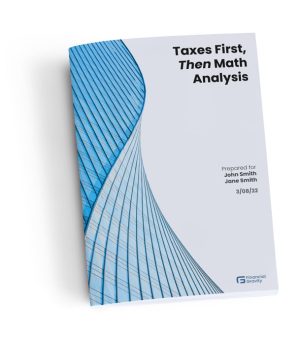The Stoics of ancient Rome believed that the universe is subject to something they called the logos, or underlying truth. Investors who have been frustrated by the slow growth of their nest egg could do themselves a big favor by looking into the logos guiding their affairs.
Many people believe Stoics are like Star Trek’s Mr. Spock, a Vulcan purely dedicated to logic with no interest in joy. That is hardly the case; Stoicism’s primary goal is a search for a way to live a happy life.
Zeno of Citium created Stoicism after losing all his wealth in a shipwreck in about 300 BCE. Zeno and his followers believed that the path to happiness lies in gaining self-control, dropping destructive emotions, and making better choices. Stoics lived by five core principles:
- manage your expectations
- be realistic about what you can change
- strive for equanimity
- recognize your emotions, and
- live in harmony with nature
This reads like a recipe for investing success, and we suggest that it is one—an ideal one.
In addition to these principles, Stoics believe in four core virtues: wisdom, courage, justice, and temperance. It’s difficult to imagine a better list of qualities in your money manager.
Let’s examine how Stoicism’s four virtues apply to portfolio management, and begin with wisdom. Stoics believe that wisdom comes down to knowing the difference between good and evil, or even just good and bad. Wisdom provides the value system for decision-making.
You’re not likely to have the kind of stark good-vs-evil situation that the clients of Bernie Madoff faced. Stoical wisdom would help you if you were confronted with the choice to work with a non-fiduciary. Fiduciaries are obligated to act solely in your best interests. They should be contrasted with salespeople, who will benefit independently of whatever may happen to you. Put that way, the choice between good and bad seems simple.
Application of Stoical wisdom would also include that second principle: be realistic about what you can change. You would realize that any investment strategy that attempts to predict market volatility, interest rates, inflation, legislation, global events, and similar things is based on luck. That would make it a speculation, not an investment. Luck is simply not a wise strategy.
The wealth managers and advisors of the wealthiest families don’t speculate in that way. Instead, they focus their efforts on getting the best value for their client’s money, maximizing their tax efficiency, diversifying away endemic risks, and understanding their loss exposure. All of those things can be—and should be—controlled.
Courage is something highly praised by the Stoics, and it has direct application to investing success. It can take real courage to stay with your investment strategy when the market is in free fall. Courage underlies the famous quote from Warren Buffett, “Be fearful when others are greedy; be greedy when others are fearful.”
Following that advice can take real courage. It’s not easy to go against the crowd, but you can take comfort from a statistical fact: every bear market in U.S. history, putting aside the current one, has eventually recovered and gone on to new highs.
In this age of clickbait, courage is more important than ever. Social media networks appear to thrive on threats and danger. Gold companies predict a massive crash, even political upheaval, and do so in good times and bad. Keep in mind that those same companies have been making those predictions for many decades, while the US economy and its stock markets have compounded over and over.
Fearfulness, when it comes to the markets, can be a self-fulfilling prophecy. You cannot expect certainty from the markets, yet many investors wait to invest until the market has hit new highs. Then FOMO—fear of missing out—can take over, leading to buying. When the market eventually reverses course, even temporarily, that investor sells. Thus, the cycle of buy-high-sell-low is created.
We should note that these cycles are real; they can and have happened. The average real return for retail equity fund investors was nearly zero in real terms for 30 years, the period from 1987 through 2016. In 2021, their underperformance relative to the S&P 500 was over 10%.
An annual report by the consulting firm DALBAR has shown that the average investor underperforms every year. So, yes, it takes courage to ride out the rough patches, but the reward for that courage is worth the effort.
Justice is often overlooked in a “buyer beware” world. While the average investor was struggling and failing, the big brokerages and insurance companies were erecting skyscrapers in American cities. In a way, all those fees paid by all those millions of Americans can be seen as one of the largest wealth transfers in history. To get justice, you’re going to have to fight for it.
The best way we can think of for you to get justice is to demand transparency. Insist on knowing all the costs of your advice and financial products. Make sure you fully understand your maximum downside exposure—in other words, be clear on what is the worst that can happen. It’s vitally important to work with fiduciaries, whose obligations to consider only your best interests tend to lock in justice for you.
Temperance generally comes down to setting realistic expectations. Outsized returns are almost always the result of outsized risks. Betting on a long shot can produce a big payday but can, and often does, end in major losses. Unfortunately, few investors who haven’t had industry training actually know what “realistic” means.
In wealth management, there is an organization that is modeled on realistic expectations and makes decisions that can be justified with math. They are called family offices. Allow me to assert that the target annual expected return for most family office clients is in the 6% to 7% range. According to math, a 7% net return will roughly double the account’s size in about 10 years.
Let’s use long-term averages to explain this. A diversified portfolio of quality stocks has a reasonable return expectation of 10% per year, and hedge funds, bonds, and real estate generally return about 5% per year. Therefore, a 50/50 blended risk-loving and risk-averse portfolio should yield 7.5%. If costs and tax efficiency are controlled, we should be able to net 6 to 7%.
Would a 6% or 7% return satisfy you? Compared with the average return from the study shown above, you would outperform the average investor by 4% per year or so. In the world of wealth management, 4% outperformance is considered heroic, and here’s why: $100,000 growing at 3% for 30 years will have an ending value of $242,726. However, that same $100,000 growing at 7% for 30 years will grow to $761,226, more than three times as much.
It will take some education to understand the real world of investing and overcome the unrealistic expectations set by asset managers and salespeople. I suggest it’s worth the effort. And I’d also recommend that you employ the principles and practices of the Stoics, something many of the wealthiest Americans do.









